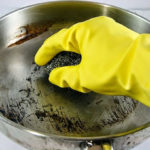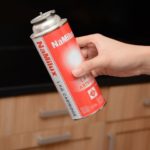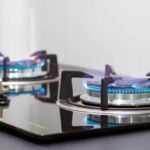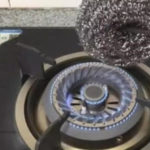Immediately washing the pot after using it to cook another dish is something that housewives often do. However, putting a clean pot directly on the gas stove is a mistake. If you need to use the pot immediately after washing, make sure to dry the bottom of the pot before placing it on the stove.
Why should you not place a clean pot directly on the gas stove?
Firstly, if you place a wet pot, both inside and outside, directly on the gas stove, you will need extra time and heat to heat up the pot, resulting in gas wastage.
However, the important drawback is that when the wet bottom of the pot is placed directly on the stove, water droplets can fall onto the stove, potentially causing damage to the automatic fire prevention and ignition device of the gas stove. Repeating this process multiple times can prevent it from igniting. That is why a clean pot should not be placed directly on the gas stove.
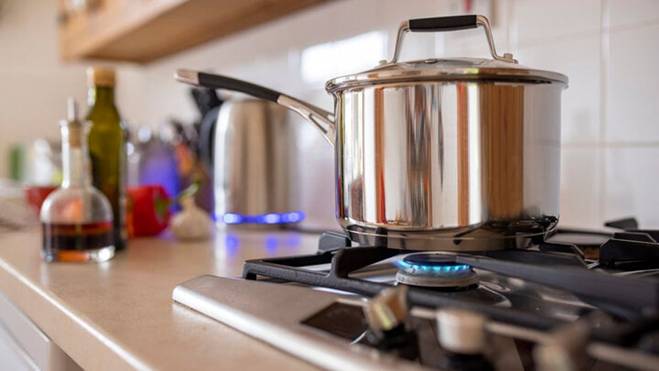
Why should you not place a clean pot directly on the gas stove? Because it causes gas wastage and affects the lifespan of the stove. (Photo: Boston University)
In addition, if the gas stove is burning and comes into contact with moisture, the blue flame will turn into yellow or red. This type of flame not only creates smoke and darkens the pot but also emits more carbon monoxide, which is harmful to health.
Therefore, a clean pot should not be placed directly on the gas stove. If you need to use it for cooking immediately after washing, remember to dry at least the bottom before placing it on the stove to continue your work.
Tips for saving gas while cooking
In addition to not placing recently washed pots directly on the gas stove, the following tips will also help you save gas efficiently.
Adjust the flame
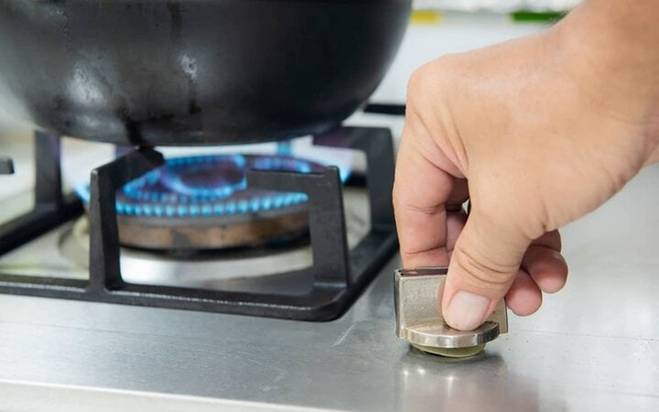
Adjusting the flame to the appropriate size for the pot is an effective way to save gas. (Photo: GenK)
Big flames do not necessarily mean that food will cook faster. It is best to pay attention to adjusting the flame so that the heat is concentrated at the bottom of the pot, avoiding the flame spreading outwards. A flame that is too large not only wastes gas but also prolongs the cooking time because the heat is dispersed around instead of focusing on the bottom of the pot.
Choose suitable cooking utensils
Choose pots that are suitable in size for the amount of food you need to cook. Do not cook a small amount of food in a large pot as it will waste gas. If you want to cook dishes that require long simmering, you should use a pressure cooker, which not only helps the food cook quickly and become tender but also saves gas.
Aluminum pots, pots with thin stainless steel bottoms, etc., absorb heat easily and help save gas when cooking.
Do not turn the stove on and off multiple times
Before cooking, prepare and pre-process ingredients, such as rinsing vegetables, slicing meat, etc., and then turn on the stove to cook continuously until finished. Avoid turning off the stove after cooking one dish to prepare for the next dish.
Turning the stove on and off multiple times will release more gas, causing wastage, and also reduce the lifespan of the stove.
Use a wind guard for the gas stove
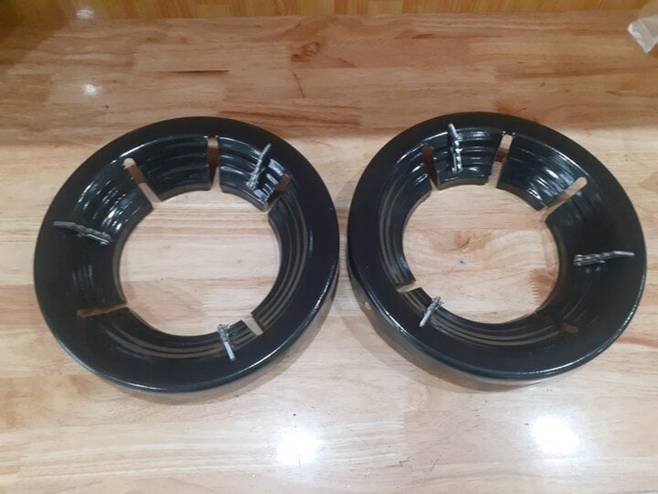
This wind guard will prevent heat from being dissipated when boiling, saving a significant amount of gas. (Photo: Bigomart.vn)
A wind guard (also called a gas-saving grate) made of metal is used to surround the burner. You can buy it at many markets and supermarkets.
This wind guard helps prevent heat loss when boiling and directs the heat directly towards the bottom of the pot, saving a significant amount of gas.
Use preheated water
Estimate the appropriate amount of water for the food from the beginning, not too much or too little.
When adding water to a cooking pot, use preheated water if available, to avoid adding cold water, which will not only reduce the flavor of the food but also take more time to bring it back to boiling, resulting in gas wastage and longer cooking time.
Thaw food before cooking
It is advisable to thaw food before cooking as it will save a significant amount of gas. Cooking food directly taken from the freezer will also require more time to heat up to melt the ice, resulting in gas wastage.
Lock the gas cylinder after cooking
After finishing cooking, make sure to lock the gas cylinder carefully. This method partly reduces gas leakage and ensures safety for users, avoiding gas leaks and potential fire hazards.
According to VTC news
When a gas stove burner is lit and comes into contact with moisture, the blue flame typically turns yellow or red. This type of flame creates smoke, darkens the pot, and emits higher levels of carbon monoxide, which is harmful to your health.
There are several ways to save gas while cooking:
- Adjust the flame: Ensure the flame is concentrated at the bottom of the pot, avoiding outward spreading. A large flame wastes gas and prolongs cooking time.
- Choose suitable cookware: Select pots that are an appropriate size for the amount of food being cooked. Pressure cookers are ideal for dishes requiring long simmering times as they save gas and tenderize food.
- Avoid turning the stove on and off: Prepare and pre-process ingredients before turning on the stove. Continuously cook all dishes to avoid wasting gas and reducing the lifespan of the stove.
- Use a wind guard: A metal wind guard surrounds the burner, preventing heat dissipation and directing heat towards the pot, thus saving gas.
- Preheated water: Use preheated water when possible to avoid reducing food flavor and wasting gas by extending cooking times.
- Thaw food: Thaw frozen food before cooking to save gas, as cooking frozen food takes longer and wastes gas.
- Lock the gas cylinder: Always lock the gas cylinder after cooking to reduce gas leakage and ensure user safety.

























